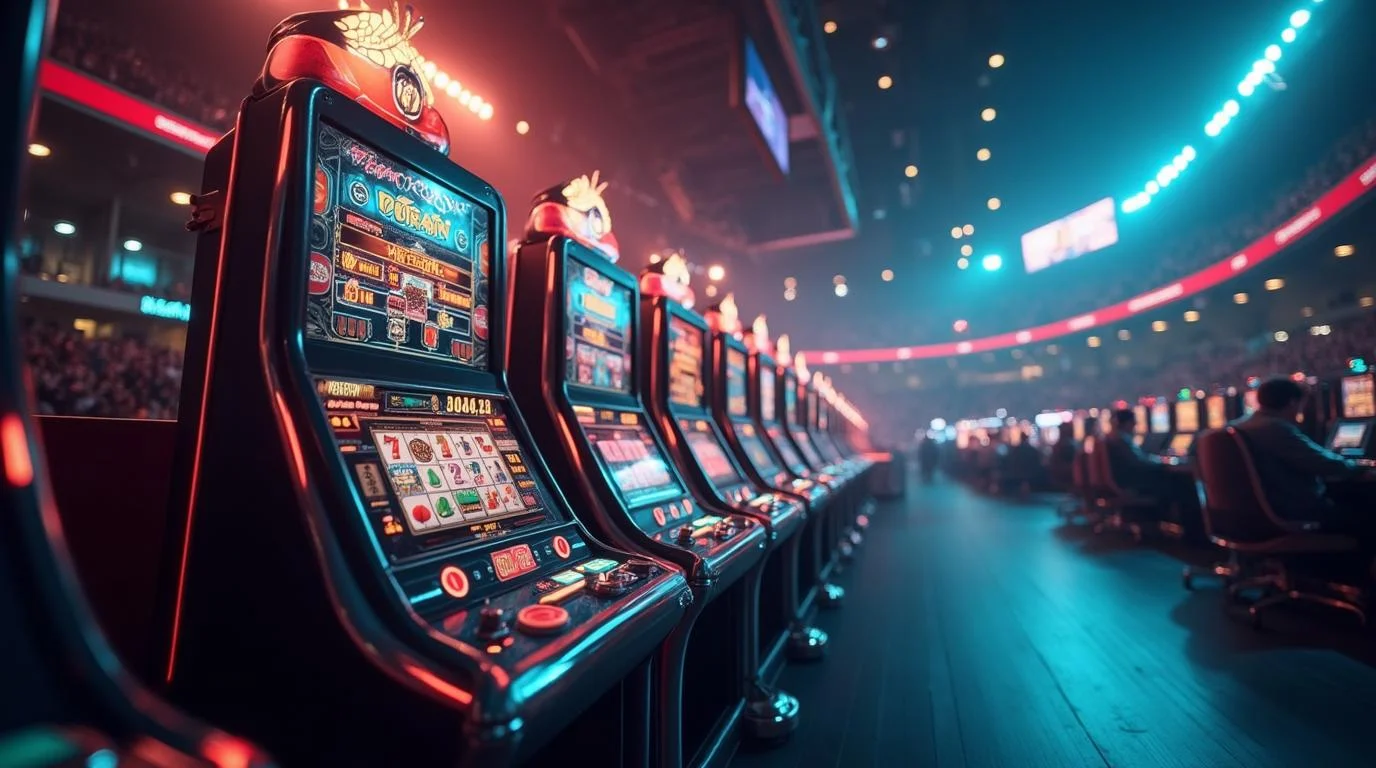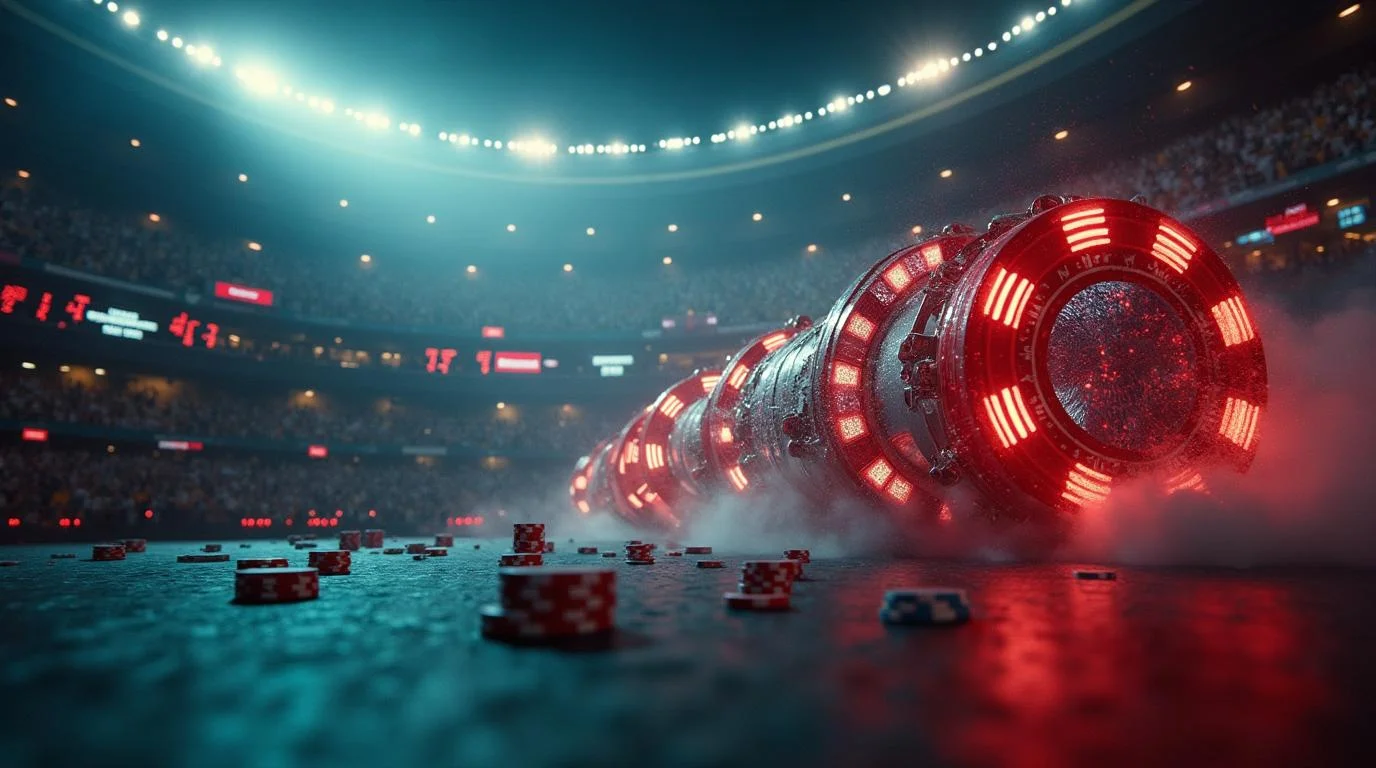Mirage Relics, Including Famous Arch and Siegfried & Roy Sculpture, Make Their Final Exit

1.0
Default
Thank you for the memories! The relics from The Mirage make their final exit, temporarily blocking traffic on Las Vegas Boulevard last Wednesday. The Mirage memorabilia - including the famous Mirage arch and the sculpture of Siegfried & Roy and one of their much-loved tigers - will make the Neon Museum their new home.
On Wednesday, Las Vegas Boulevard witnessed a brief but significant (and nostalgic) event as the iconic Mirage arch, a fixture for 34 years on the Strip, was transported to its new home at the Neon Museum. The 30-foot arch, once a symbol of the Mirage hotel, made its way down the street it had faced for decades, capturing the attention of onlookers and symbolizing a chapter closing in the ever-evolving history of Las Vegas. Its final destination, the Neon Museum, lies five miles north of its original location.
Preserving history: The Mirage arch's journey
The transfer of the Mirage arch was not just a logistical challenge but also a meaningful gesture in preserving Las Vegas' rich cultural history. The Seminole Tribe of Florida, who own the Hard Rock brand and made a recent purchase of the operating rights to the Mirage, donated the arch to the Neon Museum. The tribe acquired the Mirage from MGM Resorts in 2021 for $1.075 billion as part of their broader strategy to expand the Hard Rock brand.
In addition to the Mirage arch, other notable relics from the iconic hotel are also en route to the museum. These include the sculpture of the famous magician duo Siegfried & Roy, accompanied by one of their beloved tigers, measuring 17 feet, and the Mirage sign measuring 27 feet that once adorned the hotel's legendary volcano lagoon. These artifacts will soon find a new home in the Neon Museum's esteemed Neon Boneyard, a space dedicated to preserving the city's historic signage.
A changing skyline and the transformation of The Mirage
The Seminole Tribe's acquisition of the Mirage marks a significant shift in the Las Vegas Strip. The Mirage, originally developed by visionary Steve Wynn, was a game-changer in the city's history, setting new standards for luxury and entertainment when it opened in 1989. However, as the city continues to evolve, so too does its skyline.
The Seminole Tribe is in the process of transforming the Mirage into a Hard Rock resort and casino hotel, the second in Vegas, with a grand reopening planned for 2027. The highlight of this transformation will be a guitar-shaped hotel set to replace the iconic volcano show, a staple of the Mirage for decades. Interestingly, the site where the 660-feet hotel will rise is also the location of the first-ever casino licensed on the Strip, adding another layer of historical significance to the project.
The Mirage arch's future at the Neon Museum
While the Mirage arch has found a temporary resting place at the Neon Museum, its journey is far from over. The museum has plans to relocate from its current site to the Arts District by 2027, where it will further expand its display space. When the move is complete, the Mirage arch, along with other historic signs, will be displayed in a much larger and more prominent setting.
At the Neon Museum, the Mirage arch will join a collection of other iconic signs from Las Vegas' past. Among them are signs from Moulin Rouge, Stardust, and Riviera - remnants of a bygone era, now preserved for future generations.
The Hard Rock transition
As the transformation of the Mirage into the Hard Rock Las Vegas continues, there are still a few legal and logistical hurdles to overcome. For instance, Hard Rock officials have asked that the gaming license of the property remain operational during the construction period. In July, they requested for a two-year waiver of the license with the Clark County Business License Department, just six days prior to the Mirage officially closing its doors. This waiver, if granted, would allow the license to remain active during the three-year transformation process, with the possibility of two more extensions for six months each.
Under Clark County regulations, gambling licenses must be suspended if the licensee does not meet specific requirements for over 30 consecutive days. However, exceptions can be made if there is a valid reason for the delay. The Clark County Liquor and Gaming Licensing Board is scheduled to review Hard Rock's application at its meeting on August 20, potentially paving the way for a smoother transition.




















